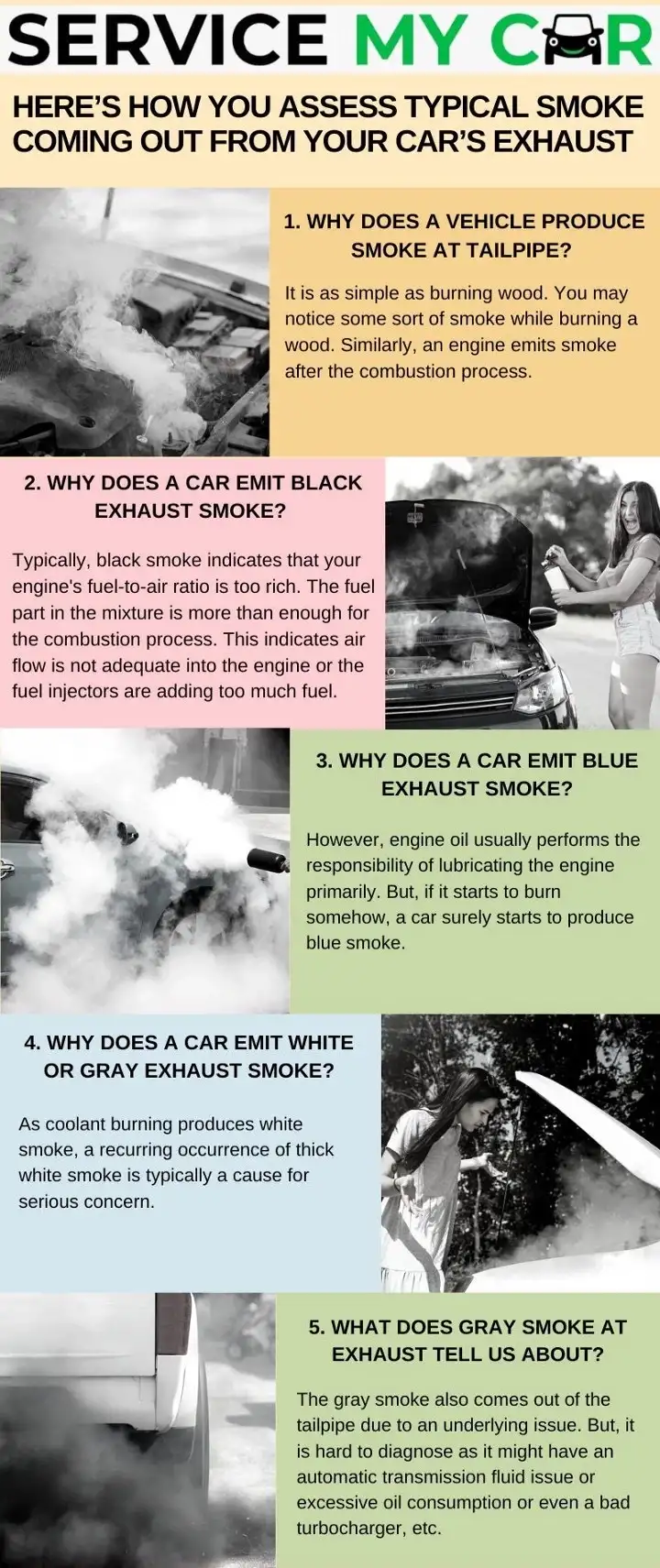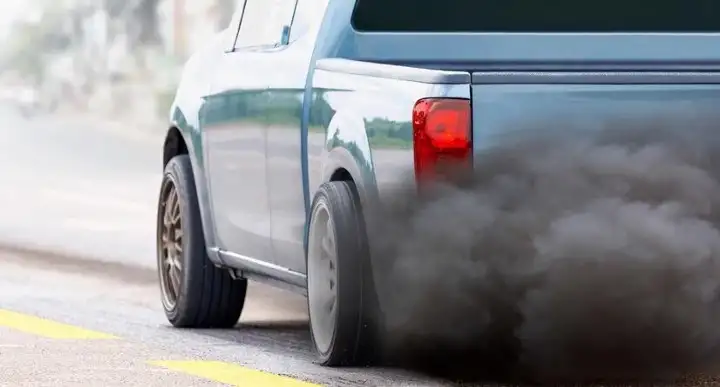Dive Board
-
Here’s How You Assess Typical Smoke Coming Out From Your Car’s Exhaust
Here’s How You Assess Typical Smoke Coming Out From Your Car’s Exhaust
by tylerkemp2546 on Dec 7th, 2022 10:43 AM

Smoke is injurious to health for humans as well as automobiles too. A vehicle with a visible sign of smoke at exhaust usually turns out to be carrying an underlying problem.
When it’s in a perfect condition, a car does not produce any visible emissions except some white smoke in the initial seconds of starting.
However, a constant stream of smoke hints at a problem with the engine. Smoke at the exhaust pipe might be of several colours, such as white, black, or blue. Each colour intimates one or more associated problems with a vehicle.
Before diving deep, let’s take a look at the process of how a vehicle emits or produces smoke.
Why does a vehicle produce smoke at tailpipe?

It is as simple as burning wood. You may notice some sort of smoke while burning a wood. Similarly, an engine emits smoke after the combustion process.
When a car's engine is running, it releases a variety of gases and particles as exhaust emissions.
Some of these gases are quite hazardous, but a component (the catalytic converter) in the exhaust system of a car usually converts them into safer ones. However, the emission appears to be colourless.
If there is an underlying problem, an engine may produce appropriate smoke that is not converted by the catalytic converter. And the tail pipe has a good view of this smoke.
A car’s exhaust emission might be any of black, blue or white colours. However, you can make an idea on an issue easily by looking at the smoke colour. Here, we try to share some of common issues and their relation with a corresponding smoke colour.
Why does a car emit black exhaust smoke?

Typically, black smoke indicates that your engine's fuel-to-air ratio is too rich. The fuel part in the mixture is more than enough for the combustion process. This indicates air flow is not adequate into the engine or the fuel injectors are adding too much fuel.
Therefore, a clogged air filter or clogged fuel injector is major culprit behind such problem.
However, a malfunctioning fuel pressure system also disturbs the process.
It's crucial to get your car checked out right away if your exhaust system ever emits black smoke. Black exhaust smoke indicates excessive fuel use.
You can utilize the services of Service My Car to deal with the black smoke issue. If you need any type of car services or repair including car tinting service, car mot check service, car wheel alignment service, car air con regas services, car body repair, car engine oil services or car battery replacement services, Service My Car provides you hassle free pickup and delivery at the nearest car service centre.
Why does a car emit blue exhaust smoke?

However, engine oil usually performs the responsibility of lubricating the engine primarily. But, if it starts to burn somehow, a car surely starts to produce blue smoke.
Oil will leak into the combustion chamber and burn due to the worn piston rings or seals on the valve guide.
It becomes necessary to check the engine oil level when you notice blue smoke at tailpipe. A declining level is unmistakably a sign that there is a problem that has been resulting in engine oil burning.
If the damage is severe, fixing the issue might be difficult and costly. However, a small leak could be easily fixed by managing the oil with a quick car oil change. Blue exhaust smoke necessitates immediate attention in either case.
Have a professional inspection performed if your car is emitting blue smoke at a reputable repair shop like Service My Car.
Why does a car emit white or gray exhaust smoke?

As coolant burning produces white smoke, a recurring occurrence of thick white smoke is typically a cause for serious concern.
An important fluid that controls engine temperature is coolant. It must come into contact with an engine component, but if it manages to get inside the cylinder block, the intense heat will likely burn it.
You might have a problem if your exhaust system is spewing out a lot of thick white smoke. This thick smoke is frequently the result of coolant burning because of problems with the engine, such as a cracked engine block, damaged cylinder, or blown head gasket.
A car may occasionally display some signs of light white smoke, especially when starting. The main cause of this kind of white smoke is typically leftover moisture in the exhaust system. Condensation occurs as soon as a car is started, and the tailpipe then emits vapour, which appears as white smoke.
If you notice persistent white smoke, stop your car as soon as you can, turn off the engine, and then dial a car recovery service like Service My Car. You also get a head gasket replacement at one of our nearest workshop.
What does gray smoke at exhaust tell us about?

The gray smoke also comes out of the tailpipe due to an underlying issue. But, it is hard to diagnose as it might have an automatic transmission fluid issue or excessive oil consumption or even a bad turbocharger, etc.
However, it is always worth looking for a proper diagnosis if you sense any type of smoke. A dense white, black, or blue smoke requires immediate attention as compared to grey smoke.
When unusual fumes are coming from your exhaust, it is usually an indicator that a problem is on the rise, or is currently happening.
Avail services of Service My Car if you doubt the exhaust emission, here you get proper diagnostics and a precise solution of the underlying problem by an expert. Just book a car service or order a car repair quote on our website or app anytime.
tylerkemp2546
Posts: 16
Joined: 23.08.2022
STATISTICS
Total posts: 193499
Total topics: 47624
Total members: 46988
Newest member: Daniel G.

Lernen Sie die Durovis Dive Familie kennen und verwandeln Sie Ihr Mobilgerät in ein VR-Headset. Erleben Sie Spiele und 360° Videos in VR auf Ihrem Smartphone oder Tablet.
Zahlungsmöglichkeiten





